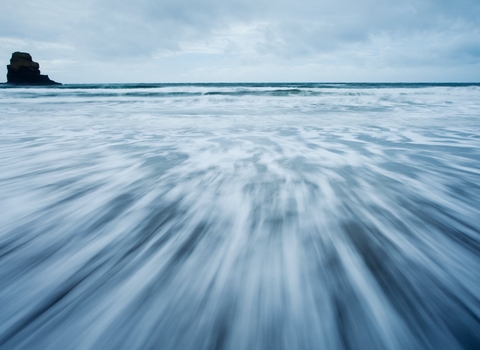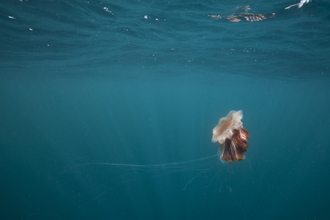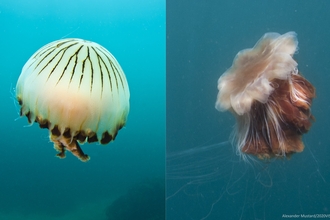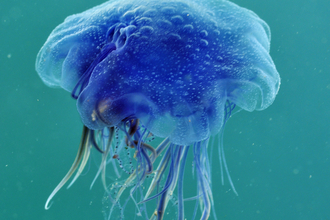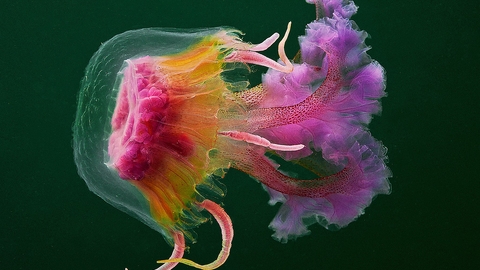
Mark Thomas
Mauve stinger
Scientific name: Pelagia noctiluca
This species can pack a powerful sting, so be sure not to get too close!
Species information
Category
Statistics
Up to 10cm across, thin tentacles up to 3m longConservation status
Common


